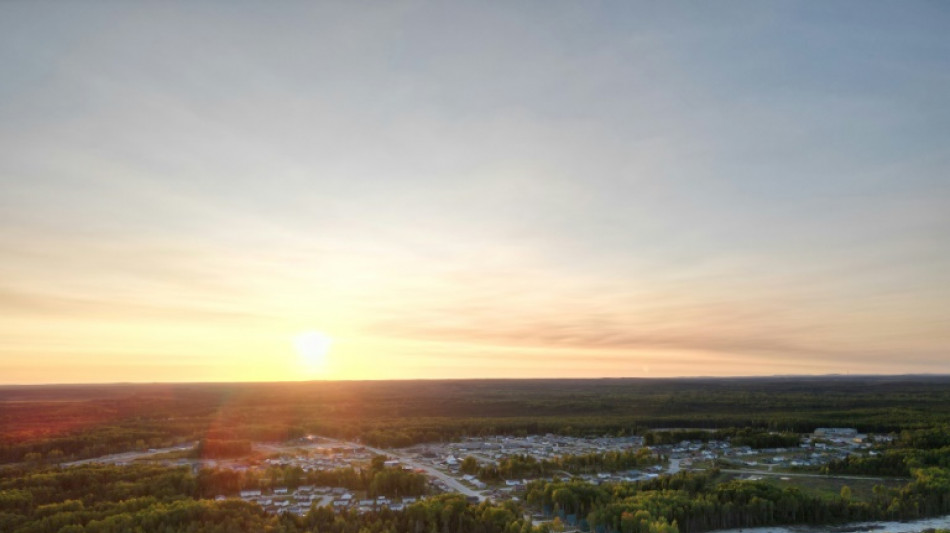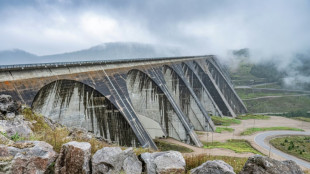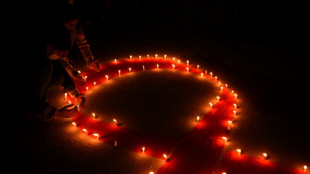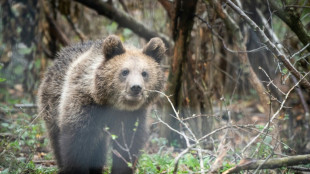
-
 Porzingis and Morant make triumphant NBA returns
Porzingis and Morant make triumphant NBA returns
-
Hong Kong top court affirms housing, inheritance rights for same-sex couples

-
 Philippines, China clashes trigger money-making disinformation
Philippines, China clashes trigger money-making disinformation
-
Most Asian markets drop, dollar gains as Trump fires tariff warning

-
 England 'not quivering' ahead of New Zealand Test challenge
England 'not quivering' ahead of New Zealand Test challenge
-
Bethell to bat at three on England Test debut against New Zealand

-
 Trump vows big tariffs on Mexico, Canada and China
Trump vows big tariffs on Mexico, Canada and China
-
New Zealand and England to play for Crowe-Thorpe Trophy

-
 Scheffler, Schauffele and McIlroy up for PGA Player of the Year
Scheffler, Schauffele and McIlroy up for PGA Player of the Year
-
Trump to face less internal pushback in new term: ex-commerce chief

-
 Extreme weather threatens Canada's hydropower future
Extreme weather threatens Canada's hydropower future
-
More than 34,000 register as candidates for Mexico judges' election

-
 Australia ban cycling's Richardson for life after UK defection
Australia ban cycling's Richardson for life after UK defection
-
Internal displacement in Africa triples in 15 years: monitor

-
 'Remarkable global progress': HIV cases and deaths declining
'Remarkable global progress': HIV cases and deaths declining
-
Social media firms raise 'serious concerns' over Australian U-16 ban

-
 Tiger to skip Hero World Challenge after back surgery
Tiger to skip Hero World Challenge after back surgery
-
MLB shifts six 2025 Rays games to avoid weather issues

-
 US women's keeper Naeher retiring after Europe matches
US women's keeper Naeher retiring after Europe matches
-
West Ham stun Newcastle to ease pressure on Lopetegui

-
 Arteta calls on Arsenal to show 'ruthless' streak on Champions League travels
Arteta calls on Arsenal to show 'ruthless' streak on Champions League travels
-
Israel bids emotional farewell to rabbi killed in UAE

-
 Sonar image was rock formation, not Amelia Earhart plane: explorer
Sonar image was rock formation, not Amelia Earhart plane: explorer
-
Tottenham goalkeeper Vicario has ankle surgery

-
 Green light for Cadillac to join Formula One grid in 2026
Green light for Cadillac to join Formula One grid in 2026
-
Israel to decide on ceasefire as US says deal 'close'

-
 California vows to step in if Trump kills US EV tax credit
California vows to step in if Trump kills US EV tax credit
-
Special counsel asks judge to dismiss subversion case against Trump

-
 Ronaldo double takes Al Nassr to brink of Asian Champions League quarters
Ronaldo double takes Al Nassr to brink of Asian Champions League quarters
-
Brazil minister says supports meat supplier 'boycott' of Carrefour

-
 Steelmaker ArcelorMittal to close two plants in France: unions
Steelmaker ArcelorMittal to close two plants in France: unions
-
Macy's says employee hid up to $154 mn in costs over 3 years

-
 EU grocery shoppers 'fooled' by 'maze' of food labels: audit
EU grocery shoppers 'fooled' by 'maze' of food labels: audit
-
Awaiting Commerzbank, Italy's UniCredit bids for Italian rival

-
 Alonso jokes about playing return amid Leverkusen injury woes
Alonso jokes about playing return amid Leverkusen injury woes
-
G7 ministers discuss ceasefire efforts in Mideast

-
 Bayern need to win all remaining Champions League games, says Kane
Bayern need to win all remaining Champions League games, says Kane
-
Indian cricketer, 13, youngest to be sold in IPL history

-
 Beating Man City eases pressure for Arsenal game: new Sporting coach
Beating Man City eases pressure for Arsenal game: new Sporting coach
-
Argentine court hears bid to end rape case against French rugby players

-
 Egypt says 17 missing after Red Sea tourist boat capsizes
Egypt says 17 missing after Red Sea tourist boat capsizes
-
Dortmund boss calls for member vote on club's arms sponsorship deal

-
 Chanel family matriarch dies aged 99: company
Chanel family matriarch dies aged 99: company
-
US boss Hayes says Chelsea stress made her 'unwell'

-
 China's Ding beats 'nervous' Gukesh in world chess opener
China's Ding beats 'nervous' Gukesh in world chess opener
-
Man City can still do 'very good things' despite slump, says Guardiola

-
 'After Mazan': France unveils new measures to combat violence against women
'After Mazan': France unveils new measures to combat violence against women
-
Scholz named party's top candidate for German elections

-
 Flick says Barca must eliminate mistakes after stumble
Flick says Barca must eliminate mistakes after stumble
-
British business group hits out at Labour's tax hikes


Wildfires upend Indigenous Canadians' balance with nature
Adrienne Jerome is heartbroken.
Her house survived Canada’s record wildfires this year, but everything that made her and many other Indigenous people in the area feel at home -- the spruce forests that enveloped her town, providing not just food but protection, everything from game to medicinal plants -- is gone.
"An evacuation in the middle of the night, with sirens blaring... it was a great shock," the former leader of this Anishinaabe tribe told AFP. "Children were crying and didn't want to leave their mothers.”
As they recover from this summer’s fires, isolated Indigenous communities surrounded by vast forests and often reachable only by air or a long, winding road are now facing big questions about their ability to maintain traditional ways of life.
"The forest that protects us has disappeared," Jerome says in a quavering voice.
"Our pantry has disappeared. There are no more small game animals, no hares, no partridges. All of the medicinal plants have burned."
All that remains now are blackened trunks.
A record number of wildfires, topping more 6,400 at last count, scorched almost 18 million hectares (nearly 70,000 square miles) this year, and forced thousands of Indigenous people to flee for their lives. Although they only represent five percent of Canada's population, they nevertheless constitute one in two evacuees.
Some communities had to evacuate multiple times over the spring and summer.
- 'Our church has disappeared' -
Wildfires are now "so dangerous and fast-moving" that evacuations are increasingly necessary, says Amy Cardinal Christianson, a Canadian Forest Service researcher who studies the effects of burns on Indigenous communities.
This poses particular challenges for remote northern villages with few or no links to Canada's large population centers in the south.
Anxieties are compounded by "a lack of trust that wildfire agencies will protect what the person or community values the most," says Christianson.
"That might be a trapline, a ceremonial site, a herd of cattle."
But the fires have become so big and numerous of late that authorities have been forced to prioritize saving homes in larger towns or cities under threat, over all else.
Everything Indigenous people do is rooted in "the forest, our territory," says Lucien Wabanonik, leader of the Lac-Simon community, his own home just steps from the woodland.
"Other people don't realize the loss that this represents for us. It's not a loss that we measure on a financial scale," he explains.
"Sacred sites, burials, meeting places have disappeared with the fire," he laments. "Our church had disappeared. It's an immense loss."
- 'It smells of death' -
This year marked the first time the Lac-Simon community had to evacuate due to forest fires.
Fires have flared in the region before but never on this scale: lightning sparked hundreds of fires at once during a weekend of storms in early June that lit up tinder dry forests.
"It smells like death," says Jerome, adding that she sobs when she thinks of all the wildlife that got trapped by advancing fires.
The community has mourned their deaths in several ceremonies.
At the same time, however, the fires have prompted renewed interest in reviving Indigenous practices that are currently curtailed.
Several Indigenous communities are calling for a return to prescribed burns to prevent wildfires, which involve setting a specific area on fire under controlled conditions to clear dead branches, brush and other materials that could become fuel for massive blazes.
Their ancestors used cultural burning practices for millennia, but there are legal barriers to who can do it now.
"These burns produce a mosaic on the landscape, creating or keeping meadows open, and promoting earlier succession forests with lots of deciduous trees that are less likely to cause crown fires," says Christianson.
Firefighters can use these "natural fire breaks to fight an out-of-control wildfire," she adds.
Adds Wabanonik, "a major shift must be taken."
A.Magalhes--PC




